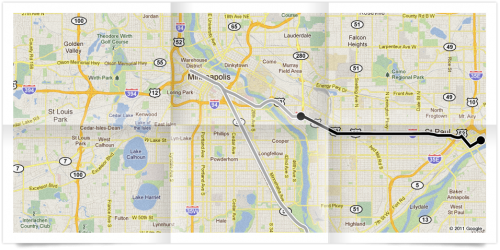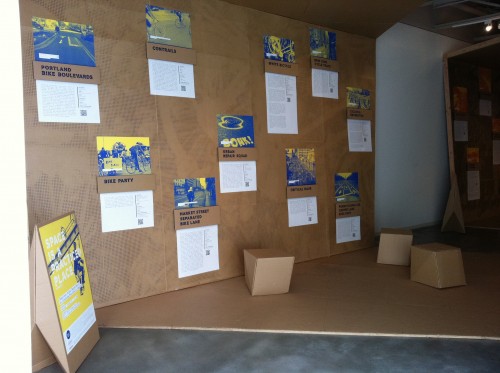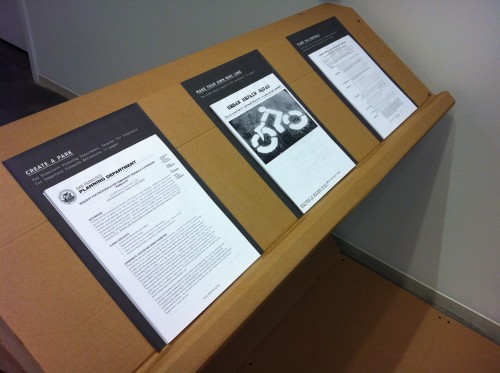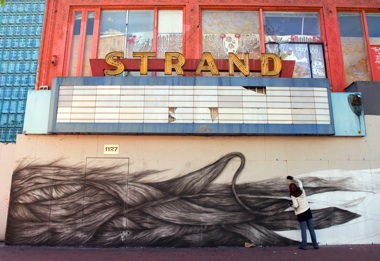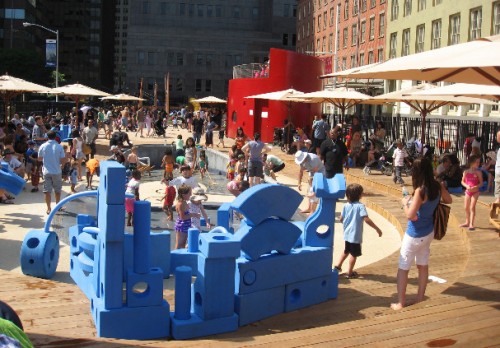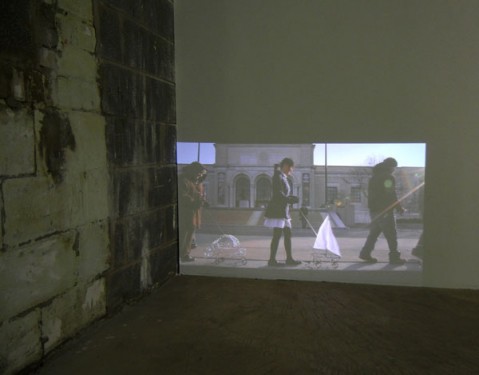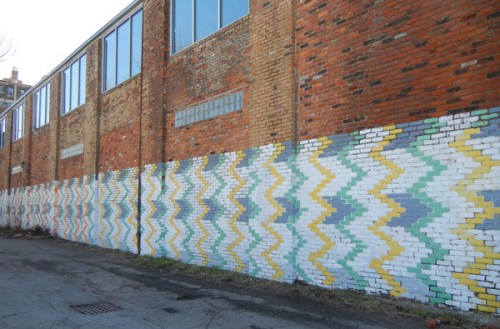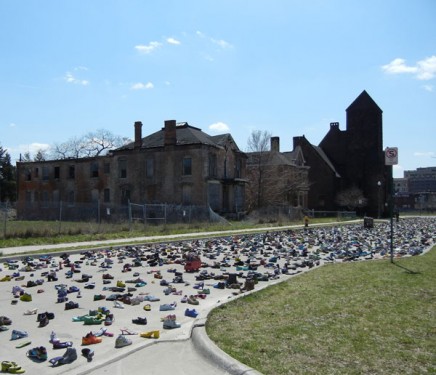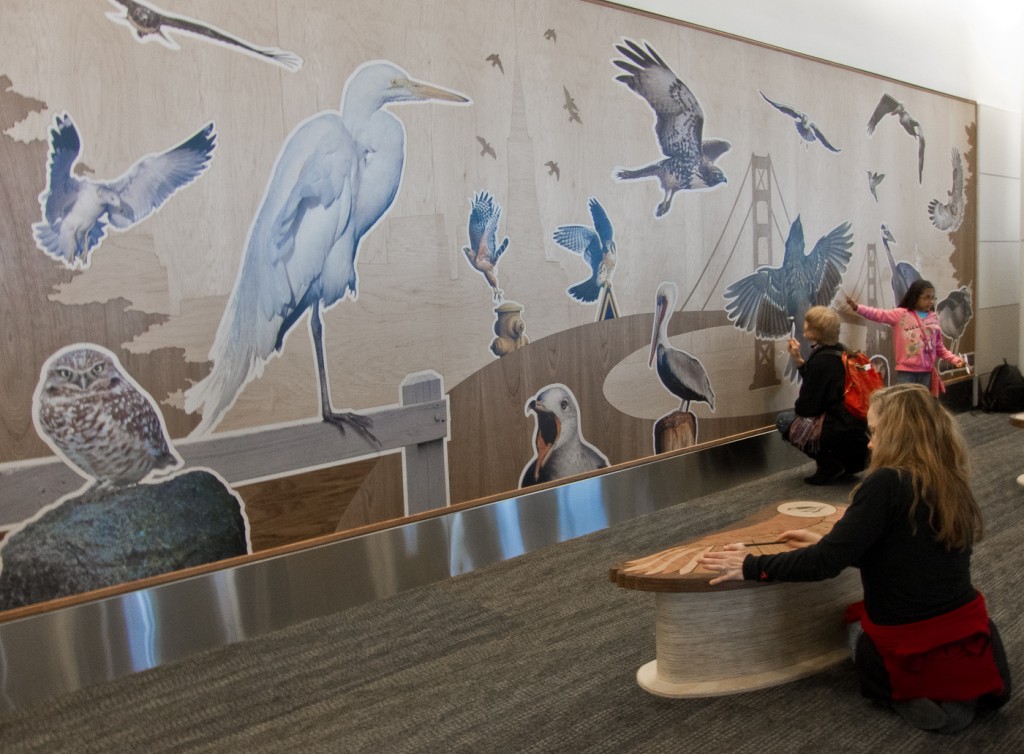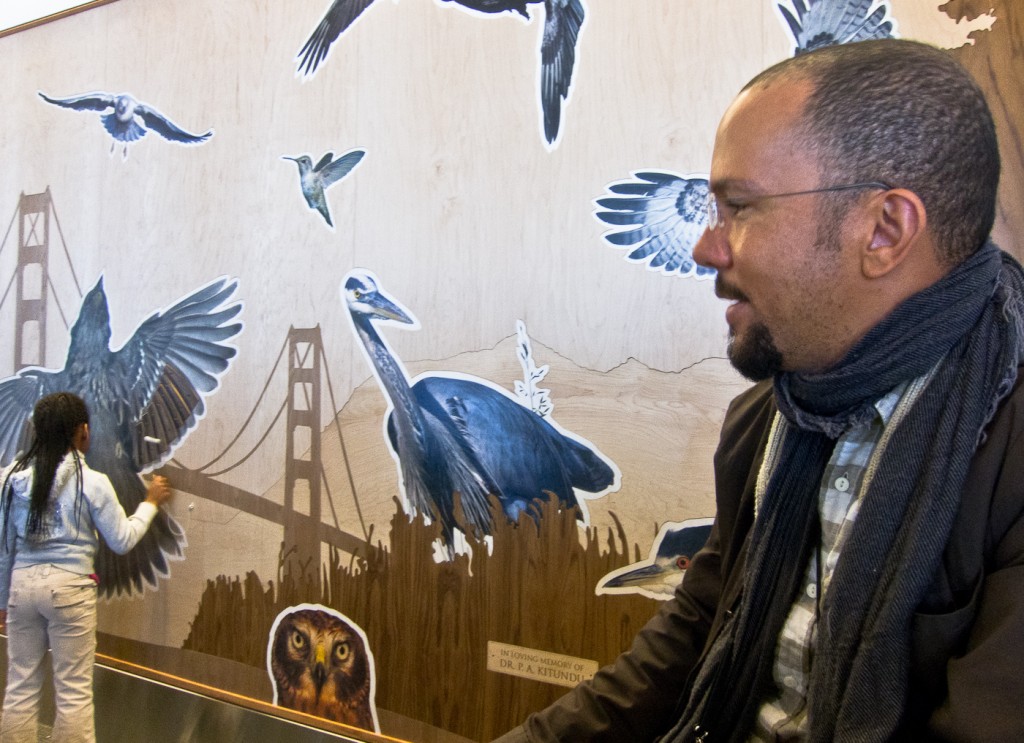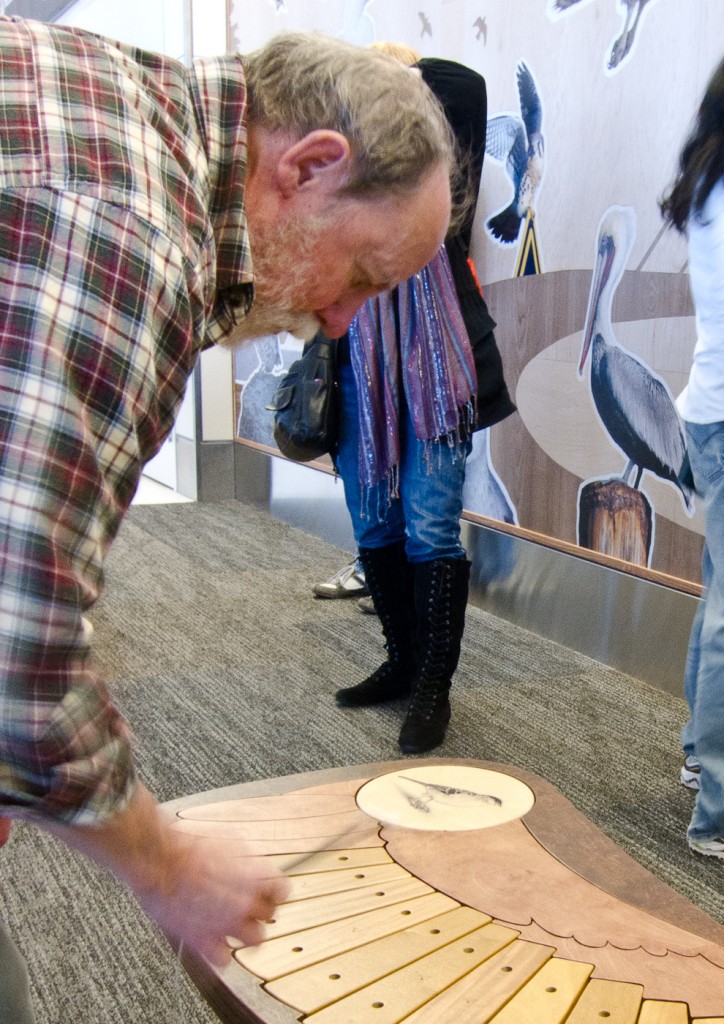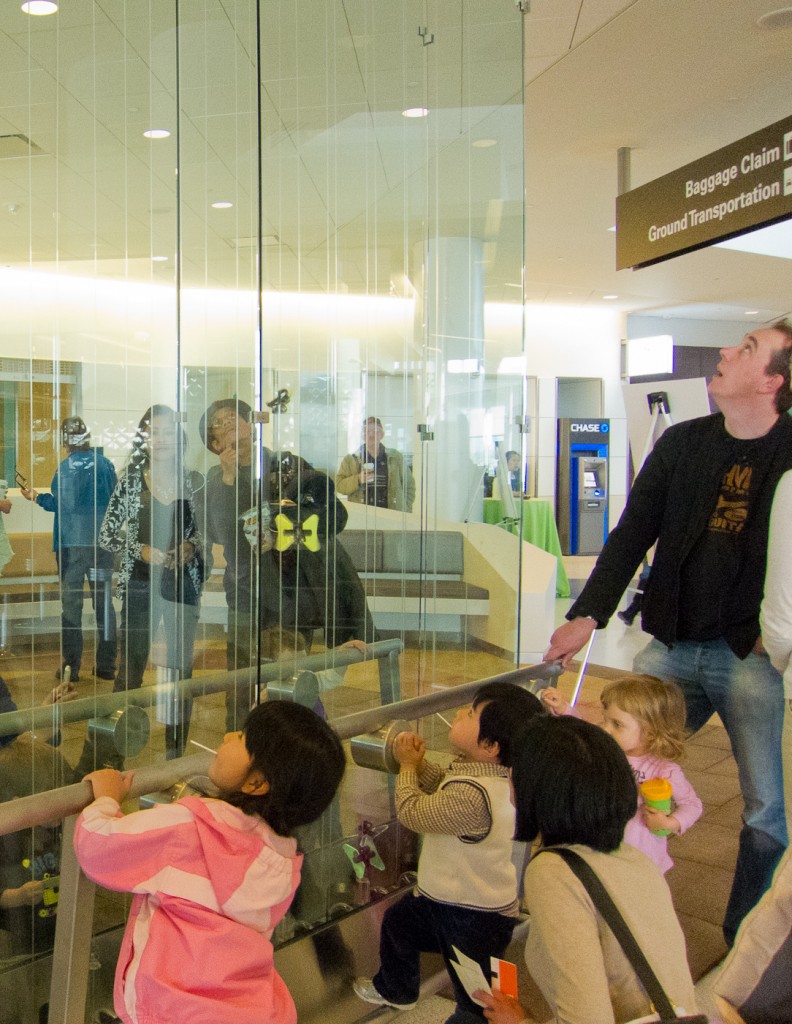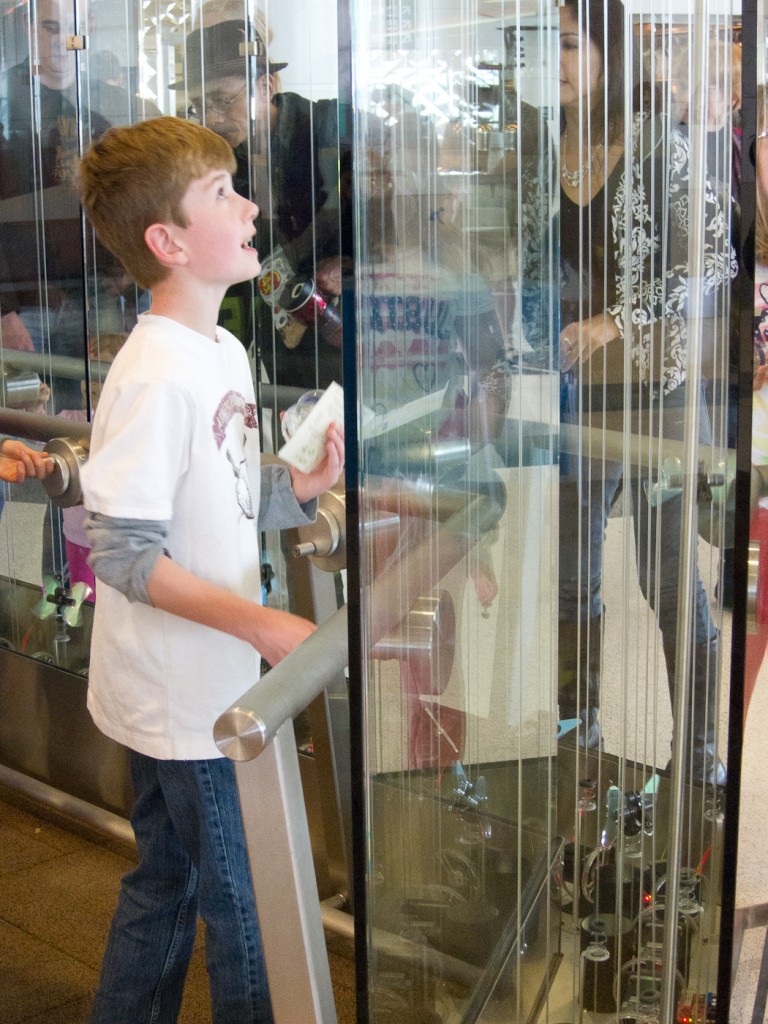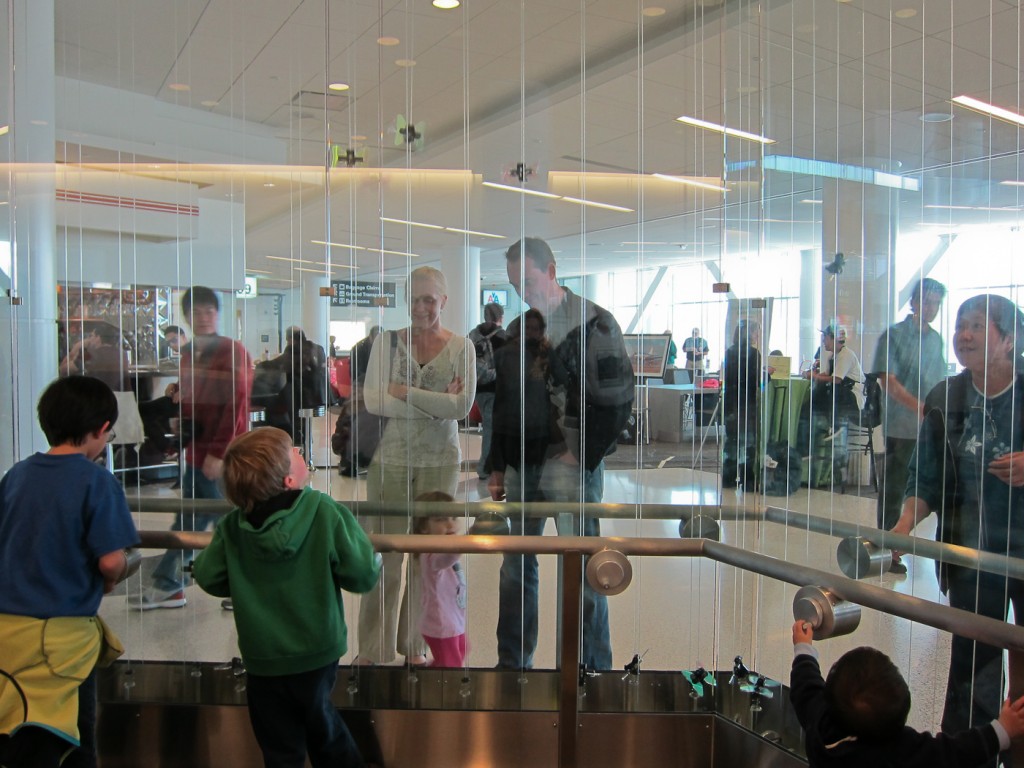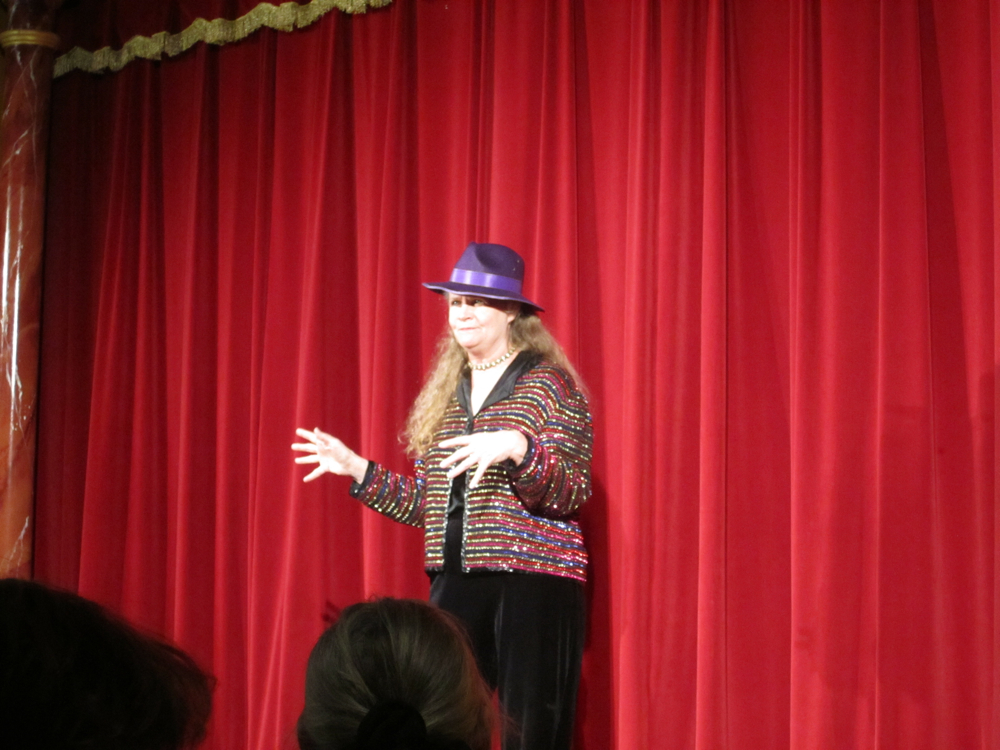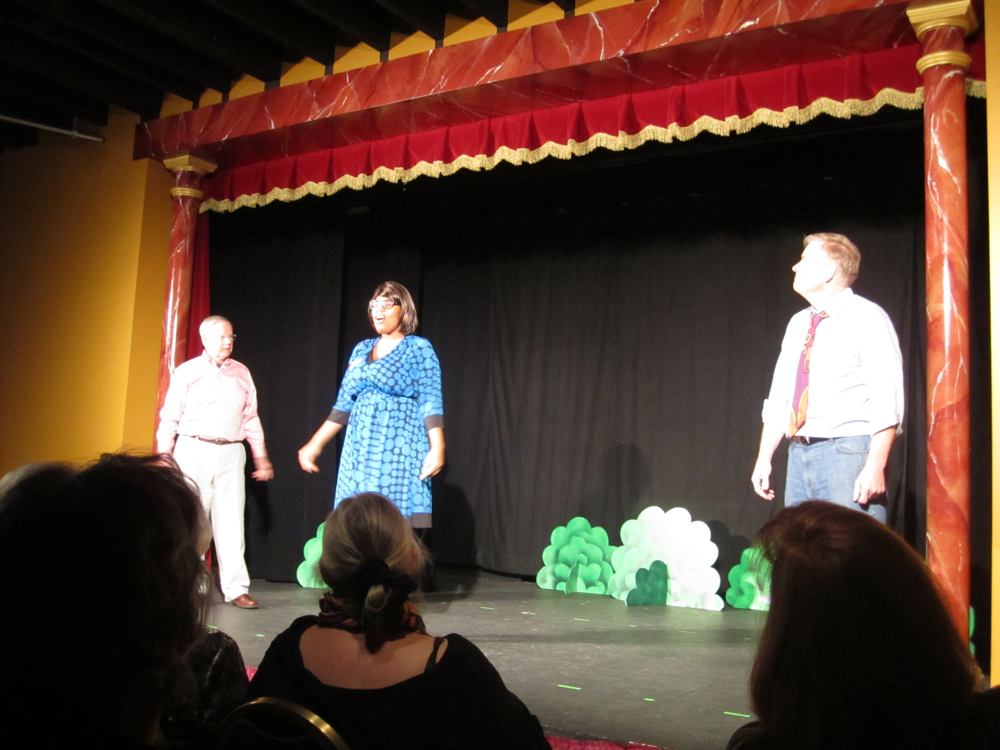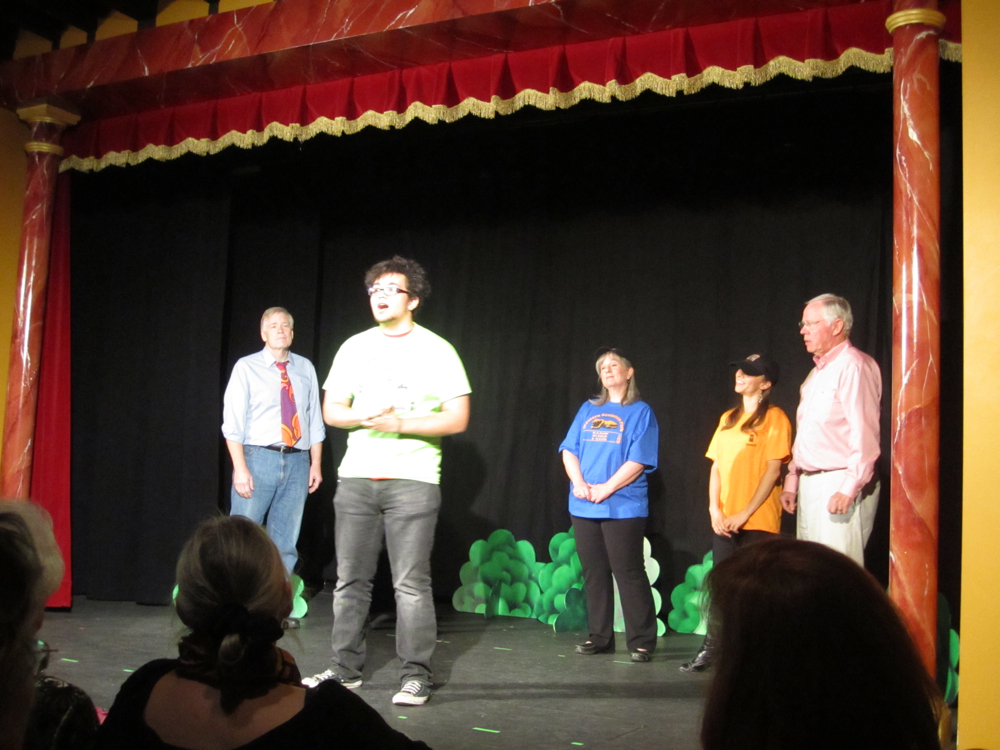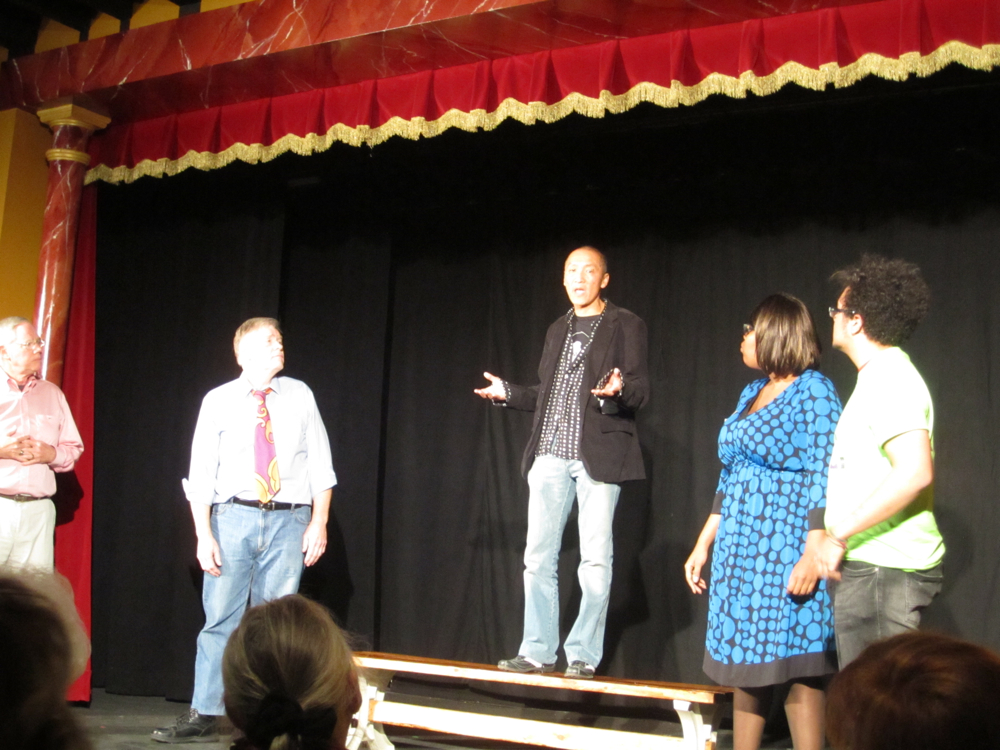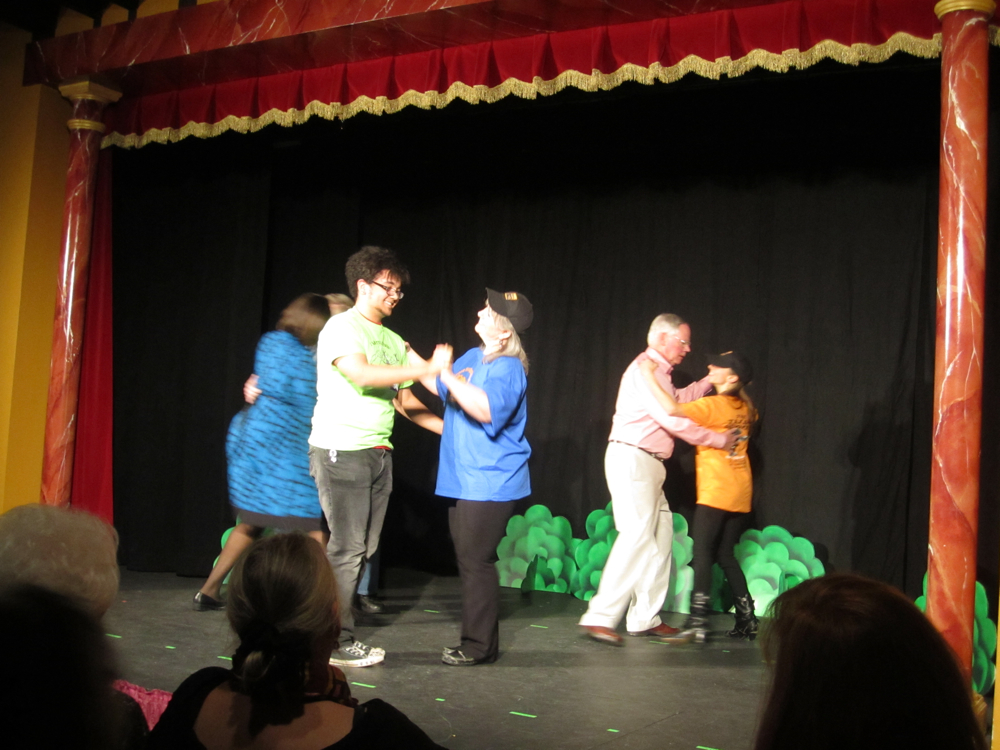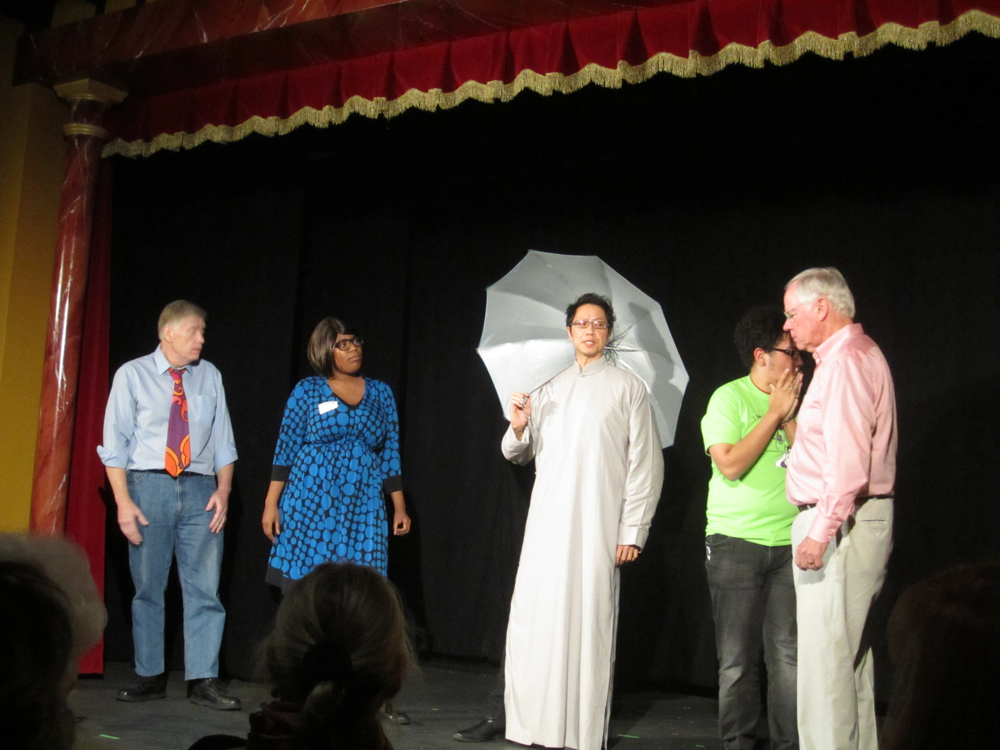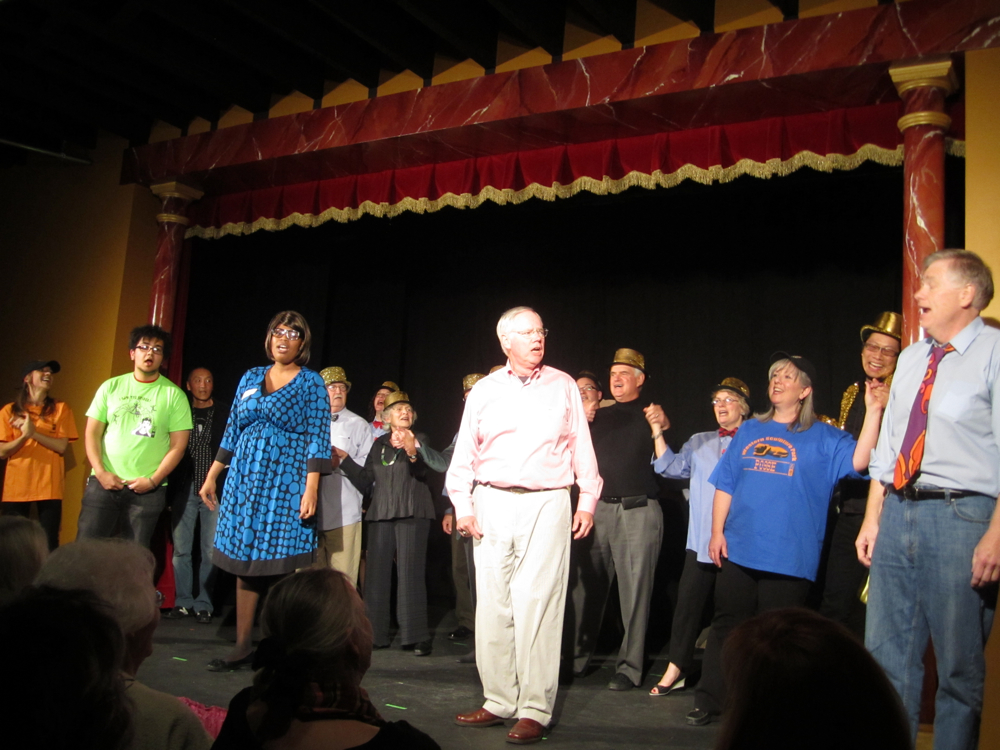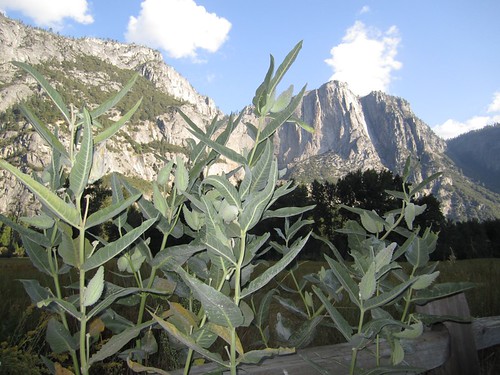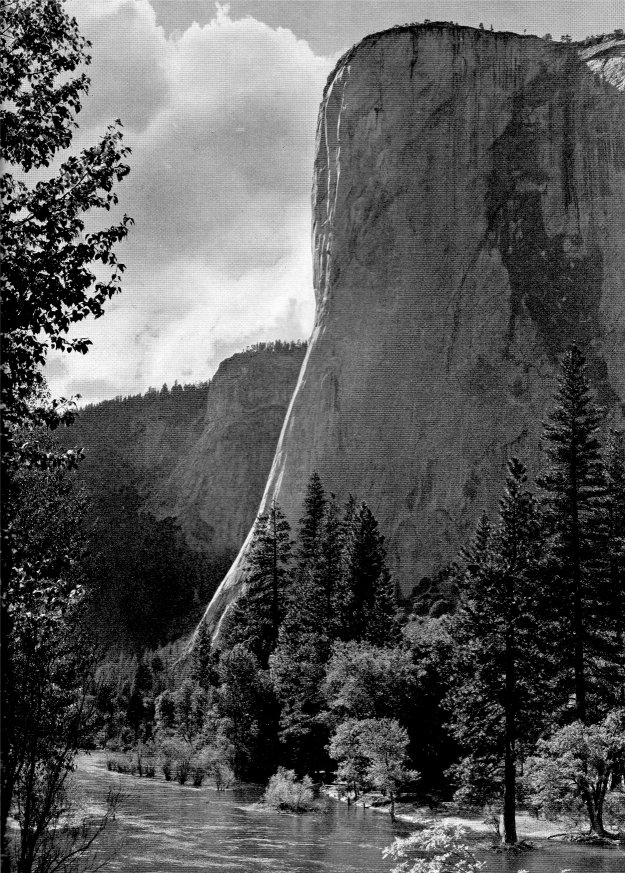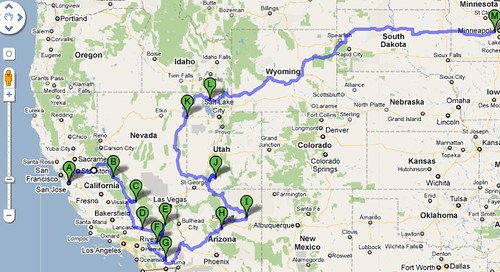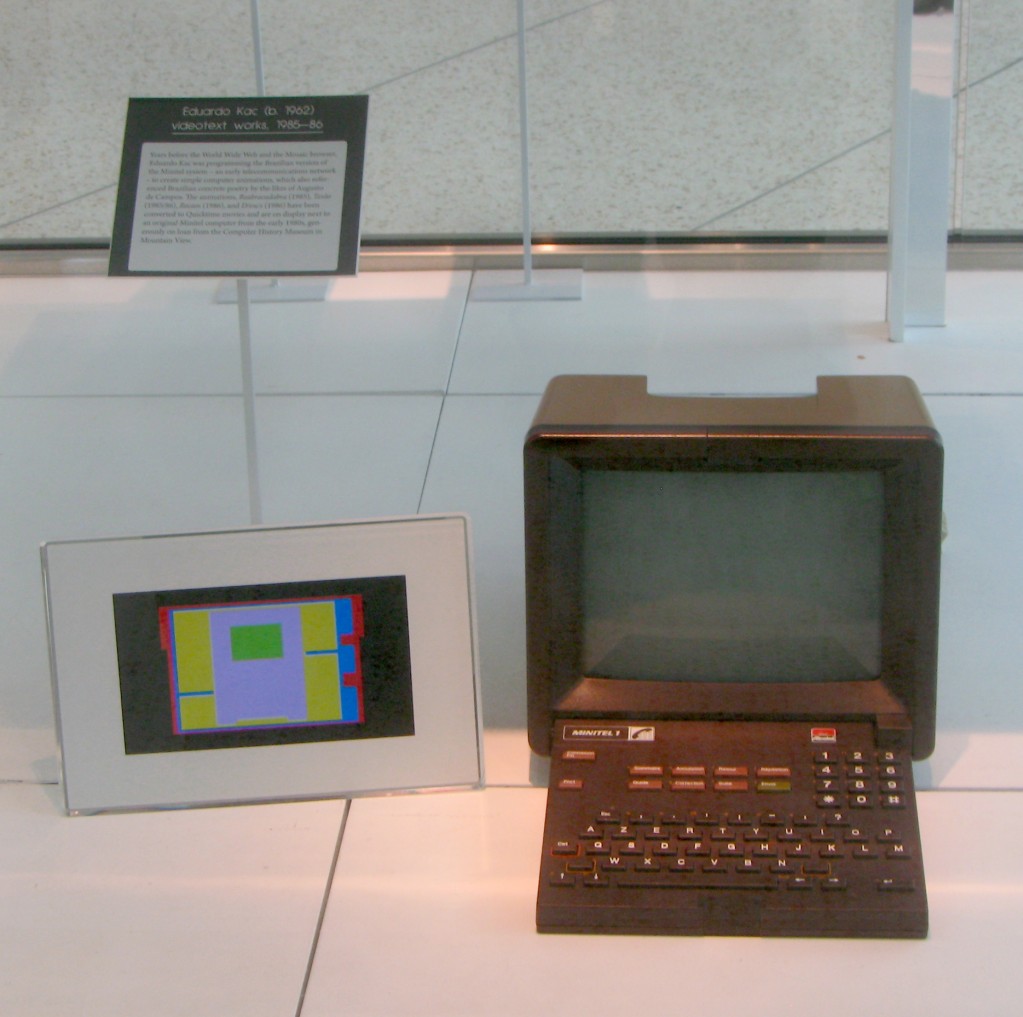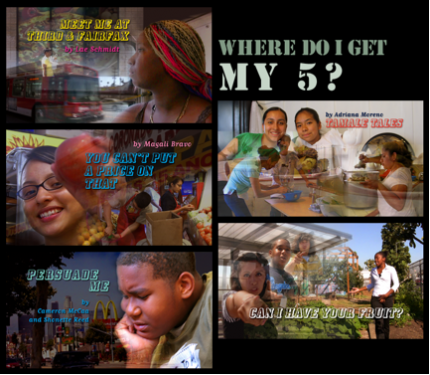
A group of guest writers have been invited to contribute to Public Address throughout 2011. Sue Bell Yank is a Los Angeles based writer and arts organizer. She is currently the Assistant Director of Academic Programs at the Hammer Museum in Los Angeles, and adjunct faculty in the Roski School of Fine Arts at the University of Southern California. Her writing has been featured in the Journal of Aesthetics and Protest, the Huffington Post, Mammut magazine, and various arts blogs including her ongoing essay blog entitled Social Practice: writings about the social in contemporary art (www.suebellyank.com).–JA
Teenaged, bespectacled Magali Bravo confronts the camera straight on as she and her small brother make their way to school through the streets of South Los Angeles. Weaving past the chain link of empty lots, nondescript motels and broad, shadeless expanses, the pair enters three corner markets in search of fresh produce. In crisp white polo shirts and khaki shorts (dress code of choice for LAUSD public schools), Magali and her brother move with a confidence that bespeaks their belonging to the neighborhood – but her face betrays disgust at the processed food choices available. Wrinkling her nose at the camera, the only fresh “produce” she finds are a few sad crates of withered potatoes and bruised bananas on the floor of one liquor store.
Magali’s video, entitled “You Can’t Put a Price on That,” is one of five videos produced through a collaboration between an interdisciplinary artist-run collective and consulting group called Public Matters, the South Los Angeles Healthy Eating Active Communities (HEAC) Initiative, and high school students at The Accelerated School.This youth media project dedicated to exposing the challenges of healthy food access in South L.A. was only one aspect of an integrated action plan that included developing a partnership with the local city council office, creating a “youth ambassador” program at The Accelerated School, bringing together various community organizations, businesses and advocates, and culminating in two Market Makeovers. One of these “makeovers” occurred at Coronado Meat Market, a corner market run by Magali’s godfather, and her video documents members of HEAC as well as her classmates moving displays, repainting, marking clear prices, and generally redecorating the store to highlight fresh produce and healthy food options [1]. Magali was clearly the impetus behind her godfather’s participation, and her energy is palpable, infusing her fellow teens and rendering the peppiness of the thirty-something HEAC project leaders somewhat redundant.
Video: You Can’t Put a Price on That,” Magali Bravo
Public Matters, LLC, a self-described “rag-tag group of consultants” [2], is the artist-run initiative behind the production of compelling videos like Magali’s, and the connective tissue linking constituents in many-tendriled collaborations like the South L.A. Market Makeovers (2007-2009). Their goal, simply stated, is to “work with community members to create media about their neighborhoods…to develop in them a sense of ownership over these places and a belief that they can directly shape their neighborhoods’ future. The media content reflects and benefits the community that has helped create it, advancing a specific community defined agenda or initiative.[3]” Though the precise role of Public Matters shifts over time and within projects, their tendency to involve themselves in social issues of great magnitude (such as tackling South and East L.A. food deserts [4] to provide increased access to healthy food and education about nutrition) necessitates a mode of working that includes multiple partners. For Public Matters, the size and scope of these partnering institutions often matches the enormity of the problems they take on – the group has gone from working with the community organization HEAC to a research center at UCLA Center for Research in Engineering, Media and Performance, or REMAP), to a major inter-university research institute called the UCLA-USC Center for Population Health and Health Disparities. Along with huge university bureaucracies also come massive funding opportunities, and additional state and federal governmental entities to answer to – for example, the current round of East L.A. market makeovers is funded by a 5-year grant from the National Institutes of Health.
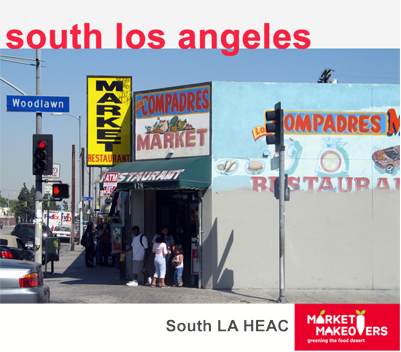
Los Compadres Market, South Los Angeles, 2007. Courtesy Public Matters, LLC.
Their lack of interest in one-offs and commitment to durational, sustainable projects that bring social benefit places Public Matters in an undefined, hybrid, interdisciplinary realm with many other artist-run initiatives that lack a traditional relationship to object-making and the commercial art market. By their university partners, Public Matters are perceived not as an artist collective, but primarily as on-the-ground liaisons with the most direct contact with schools and community organizations. They bring a way of engaging stakeholders through participatory media production that differs dramatically from traditional methods of public health messaging. From within their own organization, the boundaries between art, public health, social benefit are fluid, and become labels of convenience for different situations. Creative director Reanne Estrada maintains a separate studio practice, but sees herself engaged in a “continual practice of creative, collaborative problem-solving” in which her solo practice would suffer without Public Matters, and vice versa [5]. Mike Blockstein, principal and founder of Public Matters, very much considers the collective his art practice, and the various other consultants have diverse relationships to what they do as part of Public Matters. In his treatise on art and politics entitled Dark Matter, artist Gregory Sholette sums up this ambivalence towards definition when writing about similarly fluid practices: “I allow those who claim to make ‘art’ define it on their own terms, even if their identification with the practice is provisional, ironic, or tactical, as for example when art Steve Kurtz (with Critical Art Ensemble) insists ‘I’ll call it whatever I have to in order to communicate with someone.'[6]”

Project 3 (a.k.a. the Market Makeovers crew). Front row (left to right): Brent Langellier, Mike Blockstein, Reanne Estrada, Debra Glik, Alex Ortega, Heather Hammer, Rosa-Elena Garcia, Jeremiah Garza; Back row: Ron Brookmeyer, Nathan Cheng, Mike Prelip. Courtesy Public Matters, LLC

The UCLA-USC Center for Population Health + Health Disparities Team with Scientific Advisory Board + Community Advisory Board members. Courtesy Public Matters, LLC.
The interdisciplinary, shifting, and hybrid nature of Public Matters by no means implicates a lack of definition in purpose or goal. Rather, their organizational structure is tactical and deliberate, designed to maintain a nimbleness and flexibility supple enough to react effectively to a highly charged and overwhelmingly huge social issue. Perhaps for this reason, Public Matters has chosen to incorporate as an LLC rather than a non-profit – both Blockstein and Estrada worked extensively in the non-profit sector and understood the hierarchical professionalization necessary for such tax-exempt status. They were interested in forging “a new way of doing things as a social enterprise,” becoming essentially a for-profit entity but without any interest in generating profit – rather as a tactical method through which to form useful partnerships yet maintain elasticity in complex public situations [7]. By no means are they alone in this tactical organizing – Gregory Sholette explains that artists today are expert at imitating “a product particular to the post-industrial economy of our time” – the institution – which bespeaks a skill-set “that provides an edge when dealing with the society of risk beyond the longstanding adaptation to structural precariousness.[8]” In the case of Public Matters, this aptitude can be extrapolated beyond the precarity of artists’ positions as cultural producers and applied to the broader situations in which they insert themselves. In response to the “failed states” and “derelict institutions” that perpetuate problems as large as food deserts in the middle of enormous urban centers, artists “take up pieces of a broken world, transforming them into an improved, second-order social reality…[9]”
This oppositional motivation is perhaps too strong in the case of Public Matters, which is an extremely positive, collaborative, and optimistic organization. Yet the specific propensities which run through artist-initiated organizations like this that Sholette identifies, like “a propensity for flexible work patterns, developing gift-sharing networks, and a capacity for non-linear problem solving” allows artists to uniquely “mimic, exaggerate, or otherwise reshape given reality.[10]” Yet the ability of Public Matters to take on, maintain, and implement innovative projects alongside enormous university partnerships over long periods of time cannot be attributed to a flexible structure alone – in fact, issues of capacity and staffing plagues their ambition, and the work can be all-consuming. Rather, the success of the Public Matters model is related to a distinction between artistic and organizational practices that Irit Rogoff discusses in her article “Turning,” quoting a series of essays by philosopher Gerald Raunig. These essays mark a deep difference between “constituent” practice, in which an organization or collective exists to produce a series of protocols for both the representation and governance of their work (either in opposition to an existing market, or in spite of it). The problem that Rogoff identifies with constituent practice is that it is too easily pre-occupied with the processes through which an assembly is legitimated, and thus sabotages its own innovation and flexibility, opting instead for a regulatory ossification [11]. Rather, Raunig reveals practices like Park Fiction in Hamburg (and I would add Public Matters), as “instituent” practices. These organizations create “instituting events” that bring together a diversity of constituent practices (as in community organizations, schools, governmental entities, universities, individuals), and this plurality counter the closure of the processes at work. As Raunig describes, “The various arrangements of self-organization promote broad participation in instituting, because they newly compose themselves as a constituent power again and again, always tying into new local and global struggles.[12]”
This replicative capacity, the ability to re-invent themselves through a shifting diversity of strategies and networks, is why Public Matters can take on the kinds of projects they do with such limited capacity, and why they can navigate that fine line between “indulging the need to push boundaries and take risks, and being responsible to what we are charged with.” According to Reanne Estrada, this becomes the most integral part of the work, its most interesting and challenging aspect [13]. Public Matters faces a new aspect of this challenge in working with the USC Center for Population Health and Health Disparities on their current round of East Los Angeles market makeovers. The Center is charged with researching and evaluating the work on a large scale with enough rigor and integrity to someday impact policy, and this kind of research agenda and resources were never before available to an organization like Public Matters (nor similarly scaled artist-run initiatives). The research context poses both an exciting possibility for affecting change and rigorously assessing impact, but also becomes an enormous challenge to the flexible, non-linear work patterns and instituent events that defines Public Matters as an organization. They are learning now to work around concerns about data contamination, defining control and intervention areas, and other such problematics from the research perspective. Yet perhaps it is their very nimbleness and the “license to explore” that they grant to themselves and all of their participants that will allow them to adapt to this new reality as well.
[1] “Where do I get my 5?” Public Matters, LLC, http://www.publicmattersgroup.com/?page_id=721.
[2] Reanne Estrada, interview with author, June 6, 2011.
[3] “What is Public Matters?” Public Matters, LLC, http://www.publicmattersgroup.com/?page_id=2
[4] Food deserts are manifested by a scarcity of mainstream grocery stores, and where they do exist, they have poor quality produce and high prices. The South Los Angeles food desert is one of the largest in the country, spanning 60 square miles and encompassing 800,000 people. “South Los Angeles,” Public Matters, LLC, http://www.publicmattersgroup.com/?page_id=719
[5] Reanne Estrada, interview with the author, June 6, 2011.
[6] Gregory Sholette, Dark Matter: Art and Politics in the Age of Enterprise Culture (New York: Pluto Press, 2011), 5
[7] Reanne Estrada, interview with the author, June 6, 2011.
[8] Sholette, Dark Matter, 152.
[9] Sholette, Dark Matter, 153.
[10] Sholette, Dark Matter, 152-153.
[11] Irit Rogoff, “Turning,” in Curating and the Pedagogical Turn, eds. Paul O’Neill and Mick Wilson (Amsterdam and London: De Appel and Open Editions, 2009), 44.
[12] Rogoff, “Turning,” 45.
[13] Reanne Estrada, interview with author, June 6, 2011
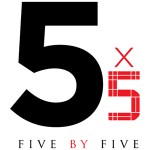 5×5 is an exciting program to commission 5 curators to each curate 5 public art projects for presentation in Washington DC during the National Cherry Blossom Festival Centennial, spring 2012.
5×5 is an exciting program to commission 5 curators to each curate 5 public art projects for presentation in Washington DC during the National Cherry Blossom Festival Centennial, spring 2012.